
- Hong Kong traveller Yardley Wong became the voice of the passengers through social media
- For others on board, she became a link to the outside world – and helped lead a mutiny
It’s 3am on a mid-February night, and Yardley Wong is trapped in a windowless ship’s cabin, unable to run from an enemy she can’t see, with crew members standing outside in the hall like prison guards.
Staring at the walls for three days and nights, she and her family have tried to overcome their fears. Wong, 43, has spent the time frequently washing her hands with soap for 20 seconds and checking her temperature every hour. She has sprayed disinfectant on the family’s clothing and shoes, and scrubbed their phones with an alcohol solution because “the phone is the most dirty place”.
The coughing and agony of those it has already infected echo down the hall and resonate in her heart. “This virus is real,” she muses on her Twitter account, @yardleywong, unaware that these difficult days will stretch from three to 30. “Life is so fragile. All great memories seem to shatter when life is under threat.”
It is not clear when the novel coronavirus came aboard the Diamond Princess cruise ship to infect more than 700 passengers and crew and kill at least eight.
Researchers know the virus was in Tokyo on January 18, infecting more than a dozen taxi drivers at a yakatabune riverboat party. It was becoming more widespread in China, which reported 198 cases on January 19 and 291 the day after. By then, “super-spreaders” were infecting clusters of people in mainland China, Japan, Iran, South Korea, Italy and elsewhere.
It had also found its way into the system of Mr Wu, an 80-year-old retired teacher who lived in a small flat in a Kwai Chung public housing estate, in Hong Kong’s New Territories, and who was about to board the Diamond Princess, in Yokohama.
In mid-January, Wu had crossed the Hong Kong border to Shenzhen’s Luohu district and waited an hour at the railway station to collect the train tickets he had ordered online for a trip to his native Fujian province. He had plans to visit relatives there after a Lunar New Year cruise with his two daughters from Yokohama to Hong Kong.
On January 17, the three flew to Tokyo for a couple of days’ sightseeing before boarding the Diamond Princess on January 20.They enjoyed their cruise, spending time relaxing in the ship’s hot-water onsen and sauna. And two days later, they joined hundreds of passengers on buses to a shopping mall in Kagoshima.
On January 25, Lunar New Year’s Day, the Diamond Princess docked at Hong Kong’s Kai Tak Cruise Terminal, where Wu and about 130 other passengers disembarked. Soon after, some – but not all – of Hong Kong’s border crossings to the mainland were closed, and flights and high-speed trains from Wuhan, the epicentre of the outbreak, were suspended.
At home in their Kwai Chung flat, Wu’s wife, a former nurse, took his temperature and found it to be normal. Nevertheless, with a persistent cough, Wu called an ambulance and went to Caritas Medical Centre. There he was found to have a fever and, on February 1, tested positive for Covid-19. He was moved to Princess Margaret Hospital, where Dr Chuang Shuk-kwan, head of communicable diseases at the Centre for Health Protection, said a chest X-ray showed shadows on his lungs. His wife, three relatives and three other people he had had contact with were quarantined.
As Wu laid on his hospital bed, he was being identified as “patient zero”, the index patient who infected the Diamond Princess – a label he disputes.
Hongkonger denies he is cruise ship’s ‘patient zero’
Hours after Wu disembarked, on January 25, Wong and her family boarded the ship with about 360 others from Hong Kong. A frequent traveller, with degrees from universities in Canberra, London and Illinois, Wong was with her husband, University of Hong Kong lecturer Carlos Soto, and their six-year-old son, who wanted to see kimonos in Tokyo and eat the “world’s longest French fries”.
Also travelling with them in their own cabins were members of her extended family; her aunt and uncle, and her 70-year-old mother and 78-year-old father, a retired businessman, whom she had talked into taking his first cruise.
“We often travel by plane for work, but my son loves ships,” Wong told the Post. The cruise, she had persuaded her family, would be a way for them to spend the Lunar New Year together. They got a deal on inner “state rooms” without windows. No problem, Wong thought, since they planned to spend their time on shore or in the ship’s swimming pool, onsen, sauna, theatre, clubs and restaurants.
On Saturday, February 1, the vessel sailed from Taiwan into Naha port, Okinawa. Soaring overhead, United States air force jets, used to protecting commercial airliners and supporting troops in the Middle East, didn’t detect the viral army coming ashore. Neither did border officers checking temperatures.
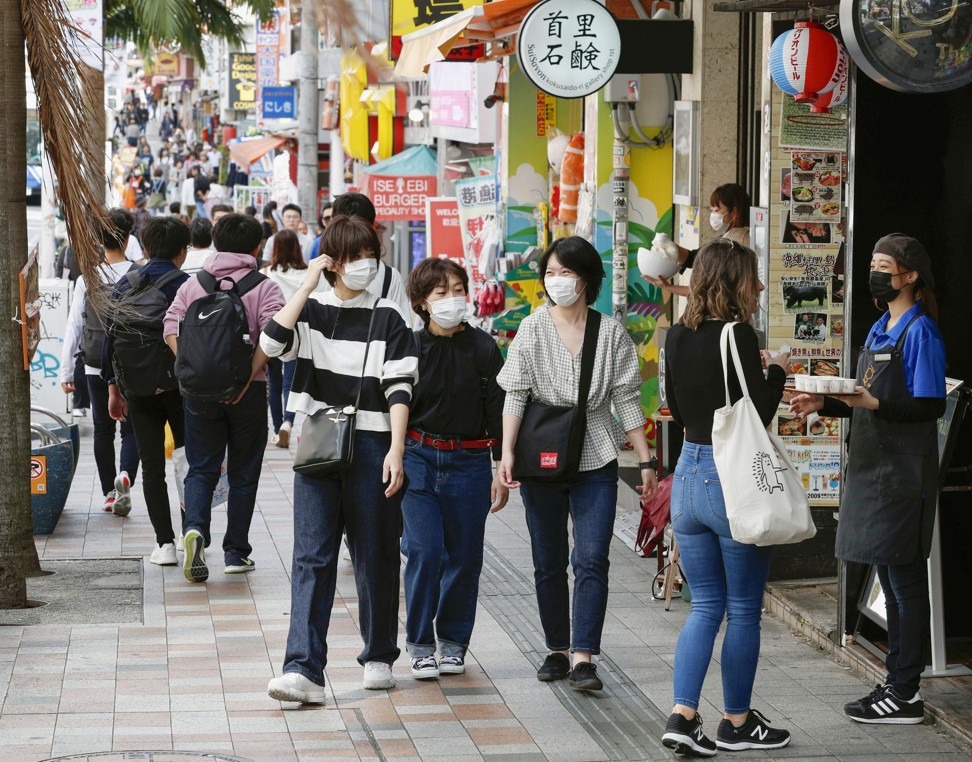
More than 2,000 Diamond Princess passengers took buses and taxis into a dense area teeming with condos, restaurants, clubs and duty-free shops manned by staff from China, Vietnam and Nepal. At some point, the virus infected a female taxi driver in her 60s, who would develop a fever and test positive two weeks later.
Soto was due to fly home from Naha that night. Worried friends in Hong Kong had sent WhatsApp messages about the viral outbreak in mainland China, but Wong assured them they were wearing masks, washing their hands and dining at uncrowded hours. Since Hong Kong schools and universities were closed, Soto decided to stay on the ship with his family in the relative safety of Japan.
In Hong Kong that day, after Wu tested positive for Covid-19, health officials relayed a message to Princess Cruises’ port representative, warning them to disinfect the ship. Nobody checked the email, it seems.
Princess Cruises’ chief doctor, Grant Tarling, then in California, told The New York Times that he saw a social media post the next day, February 2. He didn’t order more urgent actions because the patient was already off the ship.
On February 3, Captain Gennaro Arma, from Sorrento, Italy, docked the Diamond Princess in Yokohama. Arma had taken command of the US-owned, British-flagged ship in 2018, after 20 years rising through the ranks at Princess Cruises. But with Japanese military helicopters whirring overhead and the Japanese authorities ordering him to stay put, Arma realised he was no longer in charge. Quarantine officials had taken over the ship.
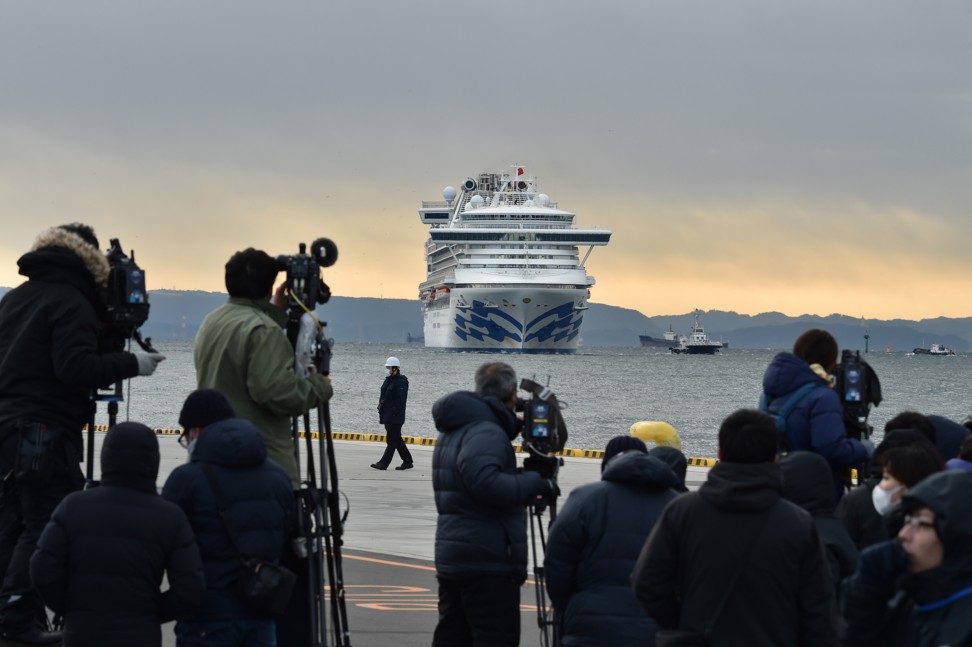
The extra tourist spending would help to fund health care. With more than a quarter of Japanese aged over 65 and health minister Katsunobu Kato, a trained economist, overseeing budget cuts, Japan’s health care system was not ready to cope with the quarantine of Diamond Princess’ 2,666 passengers from 50 nations and 1,045 crew members, most from the Philippines, Indonesia, India, Ukraine and China.
According to NHK, Abe, Kato and Motegi wanted the US Air Force at Yokota Air Base to evacuate foreign nationals. But with both the Japanese and overseas governments focused on extracting their citizens from Wuhan, Japan’s quarantine centres in Saitama and Chiba prefectures, to the north and east of Tokyo, would be fully occupied for at least two weeks.
That February 3 morning, while officials dithered, passengers enjoyed group entertainment on deck. They hoped to disembark soon. But at around 11pm, officials boarded the ship and ordered everyone to their cabins until further notice. The next day, officials, at least eight of whom would become infected, went from cabin to cabin taking temperatures. They found 120 people with fever, coughs or other symptoms, and another 153 in close contact with them.

At that point, officials had several options. They could have set up triage on the vast tarmac of Daikoku Pier and separated the sick from the healthy. They could have transported the 273 passengers to military barracks or isolation units and removed the remaining 3,438 from this “floating incubator”. They could have ordered construction crews, who often erect work camps on short notice, to build temporary shelters.
They could have persuaded foreign governments to evacuate their citizens while they were still healthy. They could have sent Japanese nationals to quarantine at home or in government or military lodgings. They could have even used uninhabited islands. Anywhere was safer than a contaminated ship. Instead, Japan and Princess Cruises crossed their fingers and hoped that more than 3,000 people kept in close quarters somehow wouldn’t infect each other.
On February 4, passengers emerged to mingle on decks, line up for buffets and share ladles, tables and condiments. The viral army also advanced via handrails, lifts, stairways and doorknobs. Finally, on February 5, Japan’s health ministry used a 1951 act to order 3,711 people into quarantine. Over the intercom, Arma told passengers to return immediately to their rooms and remain in isolation for the next 14 days.
Wong said it was a “nightmare”. Foreigners interviewed on television called it a “floating prison”. Japanese demanded to go home. But bureaucrats stuck rigidly to their quarantine plan, giving the virus 14 more days to attack the ship.
How a cruise ship became a ‘super spreading’ site
Before the cruise, Wong sold Scandinavian products online, mainly using Twitter. On February 5, day one of the quarantine, she sent her first #DiamondPrincess tweet: “Shocked and scared. Have faith in the crews and captain.” It got 164 likes, her most ever.
She wasn’t selling Nordic hygiene products when she wrote about sanitising her room. She was tweeting to stay sane, for catharsis. She wrote about hunger (“Food pls food come food”), the need for a humidifier and medications, and dealing with a bored little boy with no room to run. “#iPad is the best solution to keep a 6 yrs old busy”, she tweeted. “Tried to sleep but having a hard time, knowing that there is more test result come out tmw. Fear and unknown really got me.”
She posted a picture of the door that she couldn’t open, adding: “So much wondering through this door.”
By February 6, reporters prowling social media for videos and passengers to interview bombarded the Facebook account of Briton David Abel. Other passengers formed a private Facebook group to keep out the prying press. This fostered a bunker mentality: only passengers – not the outside world – knew how they were supporting each other or plotting to get out.
But Wong welcomed the attention. “Dear media friends, I know u r reaching out! Thank u for your kindness & concern,” she tweeted. She acted like an embedded reporter, relaying the sentiments of stranded passengers. “I am getting worried and afraid,” she wrote after 20 passengers (of 71 tested) were confirmed to have contracted the virus. “Can’t sleep. So much in my mind.” “Thinking about life, family & friends. It’s like a motion picture running in my head.” “Worry coming up high! Getting so emotional. Struggling if I can get fresh air or not. I want to cry.”
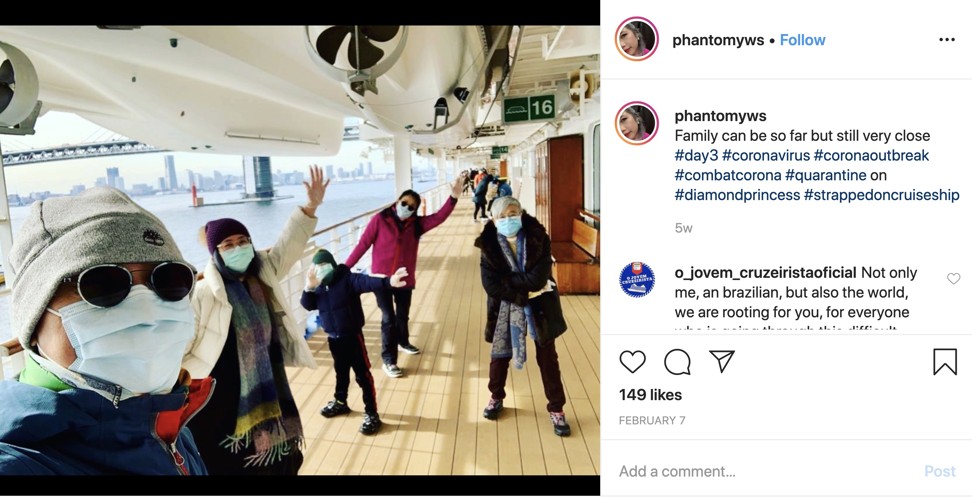
Fellow passenger Richard Bowes, from Massachusetts, in the US, asked her to call him. Her followers sent videos of koalas, kangaroos, puppies and baby elephant seals. “Hang in there,” they told her. “Praying for you.” “Virtual hugs.”
Wong, in turn, wrote: “The ship has already followed every measure from the authority. So we all need to have faith in this. There is no other option.”
On day three, February 7, Wong and her family were allowed outside. She opened her door, walked down the carpeted hall, up a staircase and into the blinding light on deck. “So nice to breathe fresh air,” she wrote. For her son, it was the “best day of his life”. The family made a funny dance video that garnered hundreds of likes.
During their daily “deck-xercise”, her family talked about hygiene and conquering mental demons. “We have to stay busy somehow,” she wrote. “Attitude makes the difference. I try to stay positive.” However, it was hard to remain positive when bad news kept coming: 41 more infections, bringing the total to 61 out of 120 people with symptoms.
Distressed Japanese passengers hung a banner from their balcony citing a “serious lack of medicine, lack of information”. In a handwritten letter, elderly passenger Tadashi Chida, whose wife was desperate for medication, told the health ministry: “The ship is out of control. An outbreak is happening. We have no road maps.”
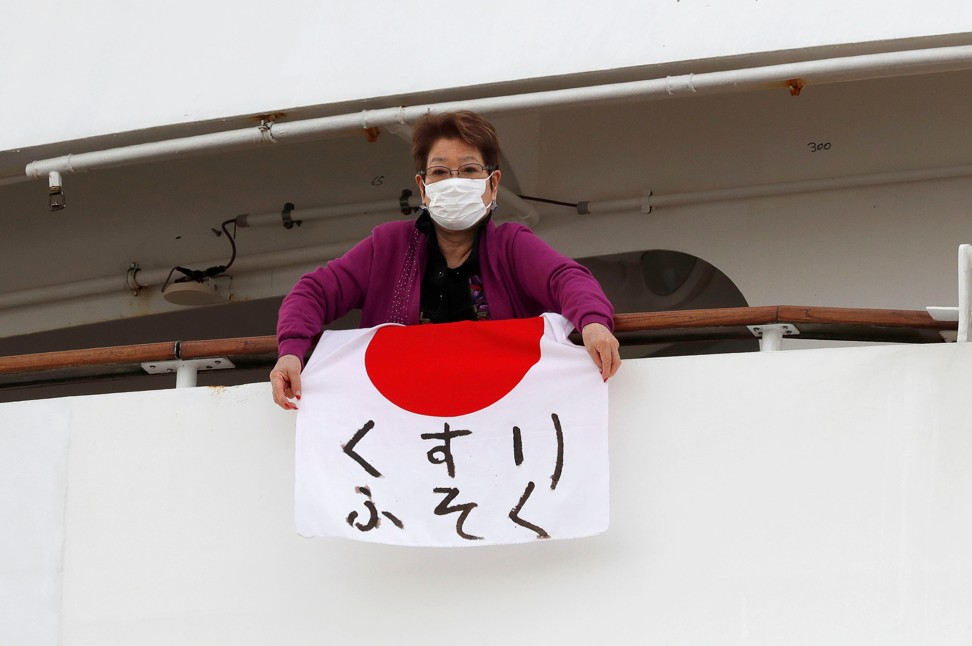
The Japanese on board could not help recalling the mismanagement of previous disasters. They remembered officials telling them the death toll from the 1995 Kobe earthquake was 12, when it was actually about 6,000. And after the magnitude-9 earthquake off Honshu on March 11, 2011, they recalled first being told to go to low-lying shelters, not nearby hills, and then being warned three-metre-high tsunami waves were coming; later that day, 20,000 people drowned in 15-metre-high waves.
Neither had they forgotten that the government suppressed news for weeks of a nuclear meltdown at Fukushima, even as foreigners fled Japan, diplomats evacuated to Osaka and TV showed footage of army helicopters spraying water at smouldering nuclear fuel rods.
Even after Kiyoshi Kurokawa, chairman of the Diet investigation into the 2011 Fukushima disaster, blamed inertia and “the collective mindset” of bureaucrats putting their own interests ahead of public safety, Japan’s officialdom evaded responsibility by claiming events were soteigai (“outside imagination”).
These same bureaucrats and politicians were now keeping Diamond Princess passengers in the dark, testing them in small batches, denying them medicine and leaking information drip by excruciating drip.
At night, dark clouds of anxiety swept across the ship. Wong’s mother, depressed, called her after midnight. A couple they had met on board had tested positive, as had a 58-year-old Briton on his honeymoon. Another passenger had become seriously ill. An 80-year-old infected man had been separated from his wife of 60 years. “When the couple is separated, oh gosh, it feels like the end of the world,” Wong wrote. Her greatest fear was that a positive test for Covid-19 would take one of her parents away from the other.

To stay busy, Wong volunteered to help elderly passengers who couldn’t understand English or Japanese. She translated the captain’s announcements into Cantonese and exchanged messages over patchy Wi-fi with their relatives in Hong Kong and Canada. “They are very panicked and very scared,” Wong told the Post at the time.
As quarantine officers took away more and more infected passengers, the Hongkongers wanted to take over their rooms, with windows, to get fresh air. But Wong told them the overstretched crew didn’t have time to sanitise them.
Craving information, passengers took turns counting ambulances on the shore to calculate the true infection count. A rumour began going around that authorities reset the quarantine clock for an additional 14 days after each positive test. “No please no,” Wong wrote on February 8.
Wong appeared live on state broadcaster China Global Television Network, but then slammed “the media” for speculating about the crew spreading the virus through food deliveries. A debate erupted over conflicting Chinese media reports that the virus was “airborne” and could spread through the vents. “Everyone please take care!” she hollered. But when her uncle freaked out, she composed herself. “Need to calm him down,” she wrote.
Even Captain Arma’s voice sounded weary as he gave them permission to hand-wash their clothing. With Wong “starting to lose sense of time”, followers sent her prayers and wishes. Japanese high school students in sailor suits sent a video of encouragement. Princess Cruises sent a Happy Anniversary card. “While anxiety is coming back, this reminds me why I’m on board,” she wrote. “I am going to pray intensely for all passengers onboard from now until we release.”

On day five, she saw an influx of doctors, nurses and officials promising medication for 500 passengers. She prayed they would deliver pills for her father’s high blood pressure. And she continued tweeting to her growing audience. “We get ready 30 minutes before we get on deck. We don’t want to lose any minutes,” she wrote. “I was so nervous because I never did any social media before. I needed to figure out something to do with myself for these 14 days so I can be strong for my family. It’s like magic talking to you guys.”
The praise poured in. “You are helping people around the world understand the situation. Your positive attitude is wonderful,” said one. “Amazed at how positive you are being!” said another.
Wong’s husband lay on the family’s shared bed studying medical data and watching reruns of The Love Boat. Their son drew a picture of the Diamond Princess. Wong posted it on Twitter and the Japan Times ran it on its front page.
Test results on day six shook them from their slumber: 65 new cases, taking the total to 130. The Diamond Princess now had the highest infection count outside China. On its coronavirus tables, the World Health Organisation gave the ship its own category.
“I need to cry to get off the anxiety,” tweeted Wong. “I feel so sad to see this today […] virus won’t be selective, they kill anyone regardless. Can we love each other to make the world a better place? On this boat, we have more than 50 nationalities […] All together we stay strong, we work as a team and combat the virus.”
February 11, day seven, brought 38 new cases and Wong posted a photo of her mother’s eye infection from rubbing it at night. Wong also couldn’t stop blinking, touching her face or rubbing her itchy eyes. Was this a symptom of Covid-19 or mental illness, she wondered.
40 Americans infected on Diamond Princess will not be evacuated
Initially, the US Centres for Disease Control and Prevention told passengers to “shelter in place”. Passenger and US doctor Arnold Hopland was livid. For years, he had been warning the Bush and Obama administrations to plan for a pandemic. He told Politico.com that the ship was a Petri dish: “This is no quarantine – it’s just a pack of people. The crew is scared to death.”
His friend, Tennessee Representative Phil Roe, put him on a conference call with health officials in the US. Hopland told them the crew, working elbow to elbow, were not trained medical workers able to enforce Japan’s quarantine orders, and some passengers were not wearing masks on deck. Roe agreed that the Americans on board should not be allowed home on commercial flights. “It’s the second-biggest concentration of coronavirus outside Wuhan,” Roe said. “There’s nobody in the world better at this than we are, at evacuating people.”
The US State Department acted with urgency, offering to airlift more than 350 Americans off the Diamond Princess. But there was a catch: evacuees would have to be quarantined for another 14 days at US bases in California or Texas. Canada, Australia and Hong Kong marched in lockstep, all requiring 14 days isolation in government quarantine centres.
A shock wave reverberated through the ship. “It will be insane, another 14 days!” Wong wrote in a 3am message. “My son will go crazy. Old people just can’t handle it. My uncle is going nuts. It’s also a nightmare for my father.”
Wong, who grew up in Australia before returning to Hong Kong to work, had two passports and was in two minds about where to go. Australian diplomats following her on Twitter sent five emails asking if she would join their mercy flight. But she worried about sitting on a plane for 14 hours with potentially contagious passengers. “You don’t know who is infected,” she wrote. “Half the cases are not showing symptoms.”
Coronavirus: Hongkongers stranded cruise ship to be flown home
She wanted to self-quarantine in her Kowloon home, wearing a tracking wristband. “Now most people in Hong Kong are working at home anyway,” she wrote.
But governments, after rescuing citizens from Wuhan, were concerned about super-spreaders. The ship’s rate of infection was higher than Hubei province’s. One online commenter called it “Wuhan-by-the-sea”.
“I need to calm down to see what happens next,” Wong wrote at 3.48am. She saw two options: fly to Hong Kong and spend another two weeks in government quarantine or a hospital, where staff were striking at the time; or stay on the ship, follow Japan’s plan, then take her son to Tokyo. “Just thinking about another 14 days is really killing me,” she wrote at 4.06am. “I feel sorry for my husband. He could have disembarked in Okinawa Feb 1. But he ended up coming with us. I can’t imagine being here without him. He said he can’t imagine being away from us for a month.”
On Sunday, February 16, with another 67 confirmed infections, the Americans aboard debated whether to join a US rescue flight that night. Hopland opted to stay in Japan with his wife, Jeanie, who had tested positive for coronavirus, as had their room steward. Novelist Gay Courter, 75, who once set a murder mystery on a cruise, agreed to fly back to US quarantine rather than become a “public health menace”.
But Wong and others looked to Matthew Smith, a maverick American who ran a family law firm in Sacramento, California, with his wife Katherine Codekas. As Princess Cruises promised to refund his luxury suite, Smith drank wine, posted photos of gourmet meals and enjoyed the views of Tokyo Bay, while slamming US bureaucrats.
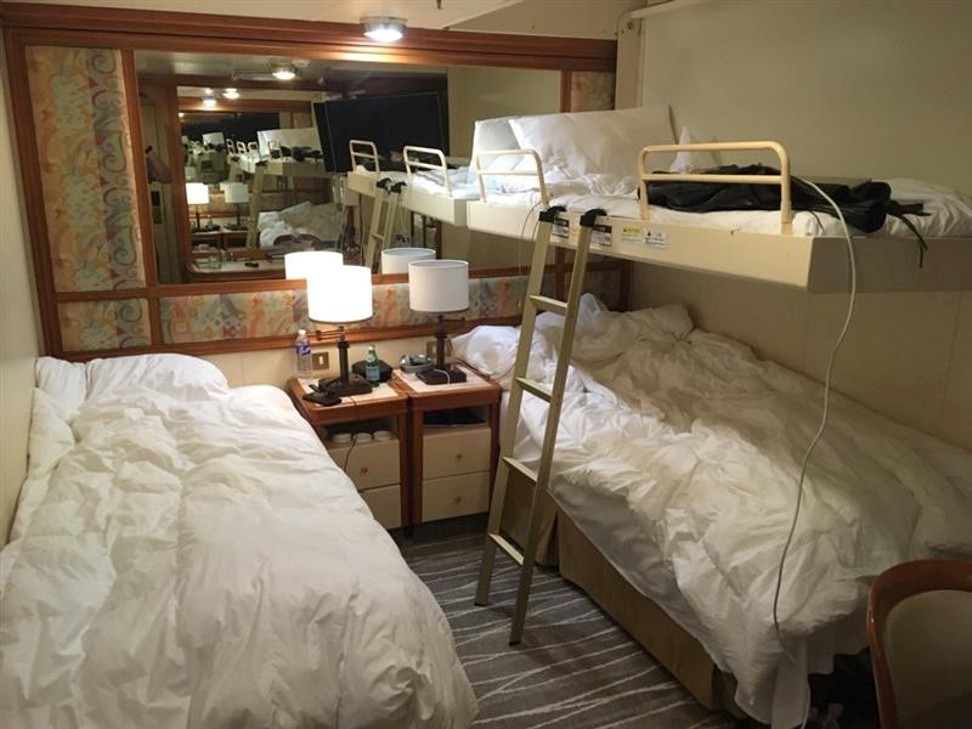
For distressed people in windowless cabins, Smith offered hope and, later, an escape route as the unofficial leader of a passenger mutiny, not against Princess Cruises or the captain (whom Smith and Wong both praised), but the governments trying to rescue them. Smith’s combative mentality – “I’m on the ship, so I know more about it than you” – infected Wong, who admired his bravado in TV appearances as the man who wouldn’t be saved.
Later that day, Japan announced a new total: 355 confirmed cases. Worryingly, 38 of them displayed no symptoms. Smith said he was safer in his cabin, which he never left, than on a plane with compatriots who didn’t follow quarantine procedures.
Wong also tried to convince her family the ship was safer than flights or quarantine centres. “Once we get tested negative, we will break free,” she wrote. And her son still wanted to see Tokyo. “He’s crying this morning, because he thinks he can’t see Japan. He put all of his hopes on this. Roblox [video game] saved the day.”
People who had been losing track of time now had to make urgent decisions. After a flurry of WhatsApp exchanges, about 100 Hongkongers vowed to join the mutiny and refuse the government charter and quarantine in Hong Kong. Then Soto, after studying medical data, revised his infection predictions upwards. He wanted off the ship, fast.
Lying in the same bed, they argued on Twitter. “Thank you for the rationale but as a mother [I need to] ensure absolute protection of my child,” Wong tweeted. “My dad has pneumonia before and my mom has pre-condition. So they are high risk. Plus no elderly can take extra 14 daysof quarantine.”
She then tweeted Smith. “I feel ya. I will not get on the charter without knowing all passengers tested.”
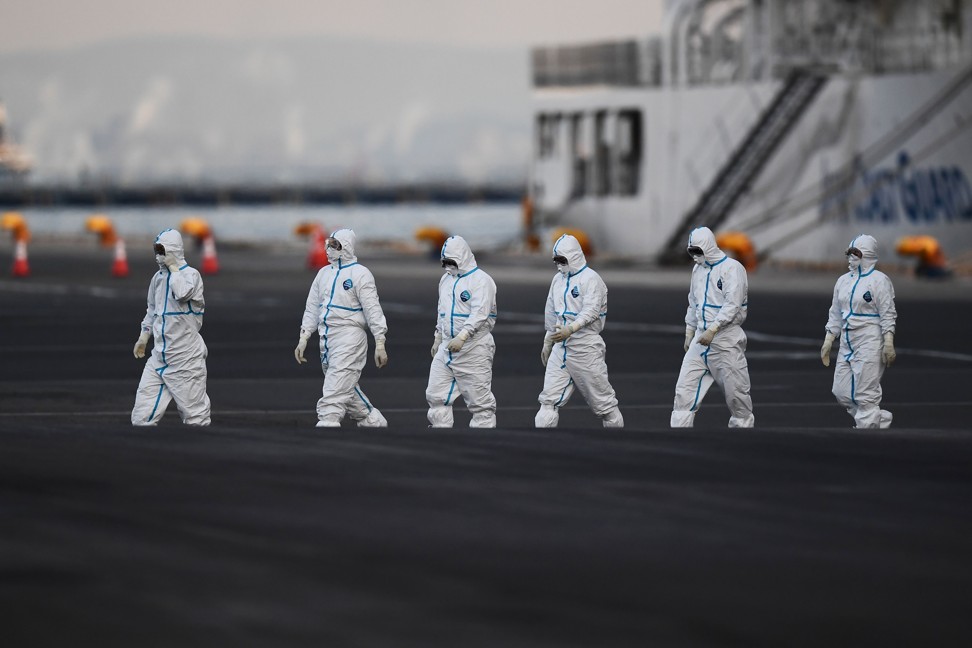
As American passengers prepared to evacuate, on February 16, Princess Cruises sent out a statement detailing a disembarkation process for all passengers.
“Tokyo, here we come!” tweeted Smith.
“Best thing I ever read since 12 days ago! Thank you Lord!” tweeted Wong. “I’m so excited! And I can’t deny it! I know I know I know I like it! Woo hoo! To celebrate the victory, I am going to start clean up the toilet.”
Smith mocked the “hazmat astronauts” coming to take him away, and he told them “no thank you”. From his balcony, he counted 11 coaches lined up to “save” the Americans. “We had an announcement telling those who are leaving to please remain in their cabins because they will be escorted off from there,” he tweeted. “Which likely means there were Americans who did not read the departure instructions and who were found wandering around the public areas of the ship. Par for the course. #IAintGettinOnABusOrAPlaneWithThesePeople.”
“Oh gosh I love your hashtag,” gushed Wong. “Can’t wait for Japanese whisky! You have to try.”
Someone asked if alcohol could kill the virus. “That’s my plan,” she replied. “If I could put my foot on land, I will fulfil my promise to my son and eat ramen and longest french fries in Tokyo.”
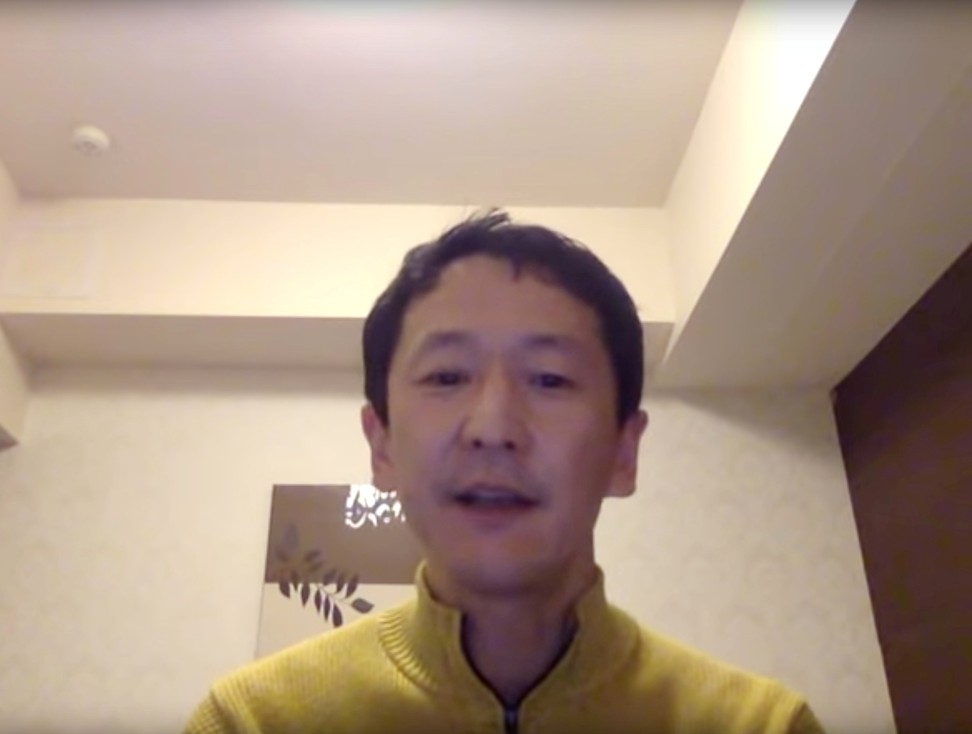
While passengers were desperate to get off the ship, Kobe University professor and infectious diseases expert Dr Kentaro Iwata was trying to get on to deploy his experience working with Ebola in Africa and Sars in China. He managed to get aboard with a disaster response team on February 18.
“I was so scared,” he said in a video posted later. “There was no way to tell where the virus is.” He noted a lack of division between the contaminated “red zone” and safe “green zone”, and saw people with fevers wandering among unprotected quarantine officers. It was “completely chaotic”, he said. Bureaucrats, not disease control experts, were in charge. Leaving the ship around 5pm, he went to a hotel where he promised “soft isolation” for 14 days because “I’m scared of spreading this disease to others”.
His videos, in Japanese and English, were viewed more than a million times before he removed them a day later. The next morning, Iwata told reporters Japan was making a big mistake by releasing 900 passengers over three days.
“We might release people who might have infections. I don’t care about the test results,” he said, citing flawed testing procedures. “You have to watch people for the next 14 days regardless of test results.” He urged Japan to follow the lead of the US, Canada, Hong Kong and others by imposing another two weeks of quarantine “ideally in an isolated environment because risk of secondary transmission is real”.
The spotlight shifted to passengers now free to disembark from the Diamond Princess and melt into the crowds of the Tokyo Bay megalopolis. While workers wore hazmat suits, unprotected journalists mobbed the first of the 443 passengers released on February 19. Some TV crews followed them home. The passengers, relieved to be on dry land, had no idea a paranoid public would blame them and the government for spreading the disease by moving the “Petri dish” from the ship to Japan’s crowded transportation system.

The test results for Wong, Soto and their son were negative, and of the more than 3,000 passengers on board, they were among the first group off the ship. Wong posted a farewell photograph of their tiny room. “This place gave us joy & memory. A bittersweet moment that brings tears in our eyes. We thank all who saved us with deep gratitude. It is not a goodbye but reunion is awaiting us.” She filmed her first steps on the tarmac. “Woo ooh. We’re leaving. We’re leaving now. Ahh, fresh air,” she said, breathless. “Thank you. Bye Diamond Princess, we’re gonna miss you. Ahh. Hello world.”
After posting a photo on the bus from Yokohama Port, they travelled 43km to Tokyo’s bustling Shinjuku ward, where Wong posted pictures of a shop, pedestrians walking between skyscrapers and a restaurant where she ate noodles and drank beer. But she was stunned when Twitter, her lifeline, began to turn against her.
“You are spreading the disease,” wrote @gsgreene.
In dozens of online exchanges, Wong explained that she was following instructions from Princess Cruises and Japanese “virus experts”. “Is it a crime to feel living again?” she asked. “Nobody knows anything about the ship but 3,700 and the front line. We are the living witnesses of this epic crisis. Nobody else.”
After a series of bitter exchanges, she finally calmed down. “I am having post quarantine anxiety. I need to detox,” she wrote. “Dear all, I have to disappear for few days. Will be back.”
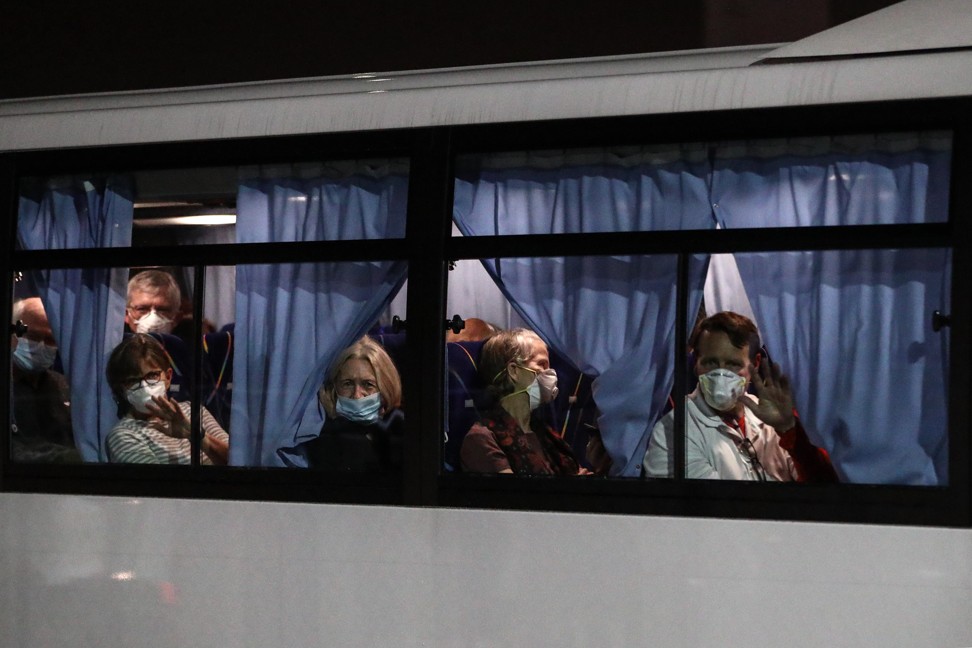
On February 20, day two of “freedom”, Soto posted on his Twitter account, @quarantinedond1, a photograph of Japan’s new instructions for another round of freed passengers, which warned them to “stay home unless absolutely necessary”. Wong’s account showed pictures of her isolating inside their hotel. “If I only take one step out of the hotel for a few hours, people will go nuts and criticise harshly without compassion.”
The family spent another night in Tokyo waiting for the release of Wong’s parents, aunt and uncle. “We came together. We leave together,” she wrote.
Finally, on February 21, the extended family boarded the Hong Kong government’s second charter flight, to be followed by another two weeks of quarantine. Also on the plane were at least four passengers who would test positive on arrival at Chek Lap Kok, casting suspicion on Japan’s testing; at least another 10 of about 200 repatriated Hongkongers would test positive in quarantine, and more than 70 remained in Japanese hospitals, two of whom died earlier this month.
Under pressure from opposition lawmakers, Japan’s health ministry made daily calls to 800 released Japanese passengers. Health minister Kato said at least 45 of them subsequently reported fevers, and at least 23 others were not properly tested. Of the overseas passengers, at least 42 Americans, seven Australians, four Britons and one Israeli tested positive after being repatriated.
One of the first casualties, an 84-year-old Japanese woman, spent a week aboard the Diamond Princess after developing a fever and diarrhoea on the first day of quarantine. HIV antiretroviral drugs also failed to save an 87-year-old Japanese man, who developed a fever on board on February 10 and died 10 days later.
We suspected some of the cruise staff may have already been infected. But they had to operate the cruise ship itself […] They had to deliver the mealsDr Norio Ohmagari, Japan’s director of disease control
Japanese health ministry officials said these deaths “proved” most infections occurred before the quarantine, with February 7 marking a “peak onset of fevers”. However, Dr Norio Ohmagari, the government’s director of disease control, also noted cases emerging from February 15 to 17.
“We suspected some of the cruise staff may have already been infected. But they had to operate the cruise ship itself […] They had to deliver the meals. So that may have caused some close contact,” Ohmagari told the media.
Another government adviser, Dr Shigeru Omi, said, “I admit the isolation policy was not perfect. The ship was not designed as a hospital. The ship is a ship.”
Princess Cruises later said at least 150 crew members were infected.
As the Philippines and other nations repatriated members of the crew, Japan finally brought everyone off the ship to quarantine in a tax department complex in Saitama. Captain Arma was the last to leave. Princess Cruises described him as “a hero in our eyes”.
After 20 days in hospital, Wu returned home. He said that Covid-19 had felt like a brief cold; his blood tests and X-rays were good.
“I cannot accept people calling me the source,” he told the Post. “If I was patient zero, how come my daughters who dined with me on the ship every day, and my wife living with me in Hong Kong, have not contracted the virus?”
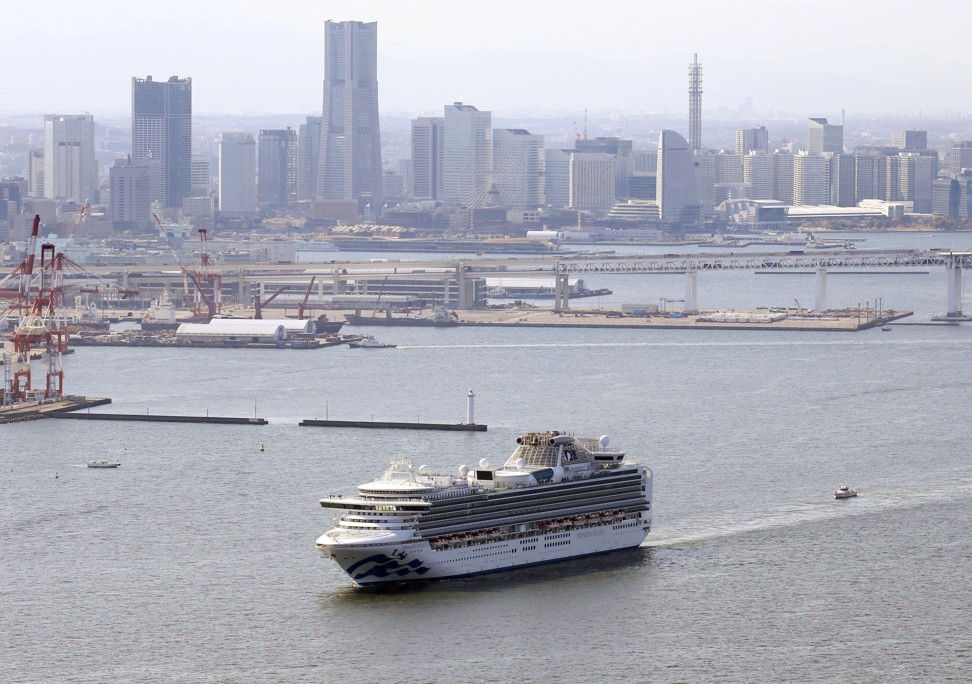
He also noted he was not the only passenger to visit mainland China before embarking.
Hong Kong experts agreed. “The timing doesn’t support that he was the first case, as his symptoms’ onset was January 23,” David Hui Shu-cheong, a respiratory medicine expert from Chinese University, told the Post. Infectious disease specialist Dr Joseph Tsang Kay-yan agreed: “It is very likely the Hong Kong man got infected from others, such as on the bus, because there were two confirmed cases on the cruise who developed symptoms before he and his family tested negative.”
Back in Hong Kong, Wong and her family entered another 14-day quarantine, tweeting that the government’s quarantine flats in Fo Tan were better than expected, even if the food was bland. At least this time they had a window.
After another round of tests proved negative, the family finally returned home. While her son immediately starting playing with his toys, Wong took a long shower. Spending a few extra days self-isolating at home, just to be safe, she joined prayer groups and stayed busy on Twitter, offering advice to passengers stranded near San Francisco on another Princess Cruises’ ship, the Grand Princess, with 21 confirmed coronavirus cases on board.
Once this all blew over, Wong tweeted, she was looking forward to her next cruise.

